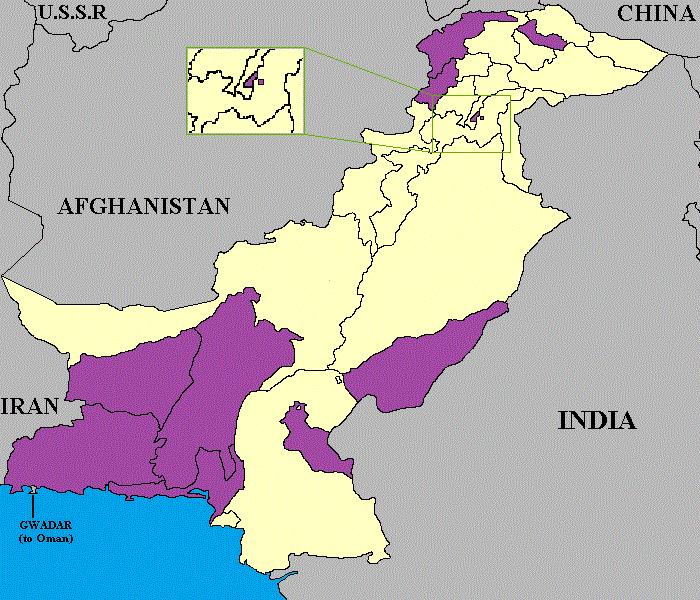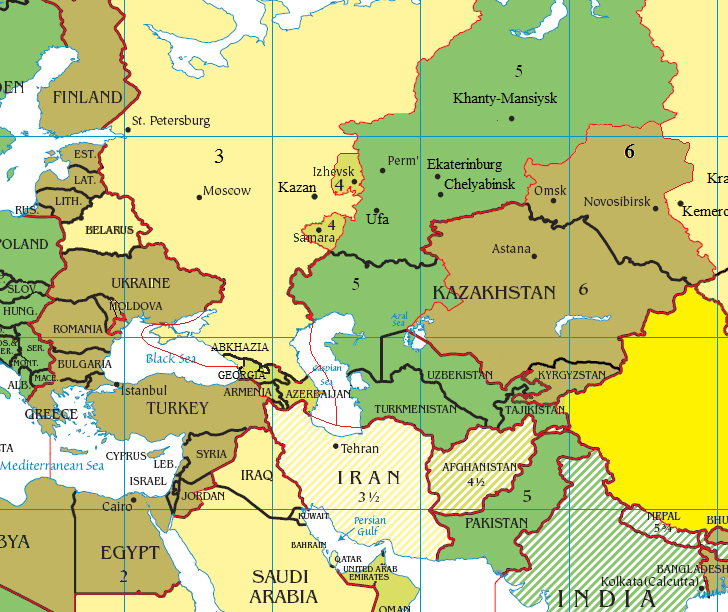|
Shah Rukan E Alam
Shah Rukn-e-Alam Colony is one of the autonomous towns of the city of Multan in the Punjab province of Pakistan Pakistan, officially the Islamic Republic of Pakistan, is a country in South Asia. It is the List of countries and dependencies by population, fifth-most populous country, with a population of over 241.5 million, having the Islam by country# .... It was established in 1984 by Multan Development Authority. Location Shah Rukn-e-Alam Colony was developed in Multan, and is connected to Masoom Shah Road and Bypass Road. It is a self-income scheme of Multan Development Authority. Phases All the 8,490 residential plots have been disposed off. Development work including water supply, sewerage and roads has been completed. References Populated places in Multan District {{Pakistan-geo-stub ... [...More Info...] [...Related Items...] OR: [Wikipedia] [Google] [Baidu] |
Pakistan
Pakistan, officially the Islamic Republic of Pakistan, is a country in South Asia. It is the List of countries and dependencies by population, fifth-most populous country, with a population of over 241.5 million, having the Islam by country#Countries, second-largest Muslim population as of 2023. Islamabad is the nation's capital, while Karachi is List of cities in Pakistan by population, its largest city and financial centre. Pakistan is the List of countries and dependencies by area, 33rd-largest country by area. Bounded by the Arabian Sea on the south, the Gulf of Oman on the southwest, and the Sir Creek on the southeast, it shares land borders with India to the east; Afghanistan to the west; Iran to the southwest; and China to the northeast. It shares a maritime border with Oman in the Gulf of Oman, and is separated from Tajikistan in the northwest by Afghanistan's narrow Wakhan Corridor. Pakistan is the site of History of Pakistan, several ancient cultures, including the ... [...More Info...] [...Related Items...] OR: [Wikipedia] [Google] [Baidu] |
Administrative Units Of Pakistan
The administrative units of Pakistan comprise four provinces, one federal territory, and two territorial dispute, disputed territories: the provinces of Punjab, Pakistan, Punjab, Sindh, Khyber Pakhtunkhwa, and Balochistan, Pakistan, Balochistan; the Islamabad Capital Territory; and the administrative territories of Azad Kashmir, Azad Jammu and Kashmir and Gilgit-Baltistan, Gilgit–Baltistan. As part of the Kashmir conflict with neighbouring India, Pakistan has also claimed sovereignty over the Indian-controlled territories of Jammu and Kashmir (union territory), Jammu and Kashmir and Ladakh since the Indo-Pakistani War of 1947–1948, First Kashmir War of 1947–1948. It also has a territorial dispute with India over Junagadh State, Junagadh, but has never exercised administrative authority over either regions. All of Pakistan's provinces and territories are subdivided into divisions of Pakistan, divisions, which are further subdivided into districts of Pakistan, districts, ... [...More Info...] [...Related Items...] OR: [Wikipedia] [Google] [Baidu] |
Punjab, Pakistan
Punjab (, ) is a Administrative units of Pakistan, province of Pakistan. With a population of over 127 million, it is the Demographics of Pakistan, most populous province in Pakistan and the List of first-level administrative divisions by population, second most populous subnational polity in the world. Located in the Geography of Pakistan, central-eastern region of the country, it has the #Economy, largest economy, contributing the most to Economy of Pakistan, national GDP in Pakistan. Lahore is the capital and largest city of the province. Other major cities include Faisalabad, Rawalpindi, Gujranwala and Multan. It is bordered by the Pakistani provinces of Khyber Pakhtunkhwa to the north-west, Balochistan, Pakistan, Balochistan to the south-west and Sindh to the south, as well as Islamabad Capital Territory to the north-west and Azad Kashmir to the north. It shares an India-Pakistan border, international border with the Indian states of Rajasthan and Punjab, India, Punjab to ... [...More Info...] [...Related Items...] OR: [Wikipedia] [Google] [Baidu] |
Divisions Of Punjab, Pakistan
The divisions of Punjab (), are the first-order administrative divisions, administrative bodies of the Punjab, Pakistan, Punjab Province of Pakistan. In total, there are 10 divisions, which are further divided into Districts of Punjab (Pakistan), districts ranging from three to six per division, depending upon area. Divisions are governed by Commissioners while districts are governed by Deputy Commissioner (Pakistan), Deputy Commissioners. History Administrative divisions had formed an integral tier of government from the times of Mughal Empire and latterly British Raj. The Lahore Subah, Lahore and Multan Subahs (combinedly Punjab) during Mughal era while British Punjab, Punjab Province during British era were subdivided into divisions, which were themselves subdivided into districts. After independence of Pakistan, independence, The province of West Punjab had four divisions – Lahore Division, Lahore, Multan Division, Multan, Rawalpindi Division, Rawalpindi and Sargodha Divis ... [...More Info...] [...Related Items...] OR: [Wikipedia] [Google] [Baidu] |
Multan Division
Multan Division is an administrative division of Punjab Province, Pakistan. It was created during British colonial rule in South Asia in the 19th century. It includes 4 districts: Khanewal, Lodhran, Vehari and Multan and 15 Tehsils. Its recorded population was just over 1.40 crores in 2023. History Multan Division was created during the British colonial rule in South Asia. During British rule, All the districts that later formed Dera Ghazi Khan Division, collectively formed districts of Multan Division up till 1982 when new Dera Ghazi Khan Division was formed. Sahiwal region was part of the division till 2008 when a separate Sahiwal division was created. The division laid between 28°25' and 33°13 N and 69°19' and 73°39 E, the Sutlej divided it from Bahawalpur on the south-east, while the Indus river flowed partly through the Division and partly along its border to the west. The headquarters of the Commissioner were at Multan (or in the hot season, at the hill station o ... [...More Info...] [...Related Items...] OR: [Wikipedia] [Google] [Baidu] |
Time In Pakistan
Pakistan uses one time zone, which is Pakistan Standard Time (PKT). This is UTC+05:00 — that is, five hours ahead of Coordinated Universal Time Coordinated Universal Time (UTC) is the primary time standard globally used to regulate clocks and time. It establishes a reference for the current time, forming the basis for civil time and time zones. UTC facilitates international communicat .... History Notation Daylight saving time Pakistan has experimented with Daylight Saving Time (DST) a number of times since 2002, shifting local time from UTC+05:00 to UTC+06:00 during various summer periods. Daylight saving time in Pakistan has not been observed since 2009. IANA time zone database The IANA time zone database contains one zone for Pakistan in the file zone.tab, named Asia/Karachi. References Geography of Pakistan {{standard-stub ... [...More Info...] [...Related Items...] OR: [Wikipedia] [Google] [Baidu] |
List Of Districts Of Pakistan
A list is a set of discrete items of information collected and set forth in some format for utility, entertainment, or other purposes. A list may be memorialized in any number of ways, including existing only in the mind of the list-maker, but lists are frequently written down on paper, or maintained electronically. Lists are "most frequently a tool", and "one does not ''read'' but only ''uses'' a list: one looks up the relevant information in it, but usually does not need to deal with it as a whole".Lucie Doležalová,The Potential and Limitations of Studying Lists, in Lucie Doležalová, ed., ''The Charm of a List: From the Sumerians to Computerised Data Processing'' (2009). Purpose It has been observed that, with a few exceptions, "the scholarship on lists remains fragmented". David Wallechinsky, a co-author of '' The Book of Lists'', described the attraction of lists as being "because we live in an era of overstimulation, especially in terms of information, and lists help us ... [...More Info...] [...Related Items...] OR: [Wikipedia] [Google] [Baidu] |
Multan District
Multan District (), is a district in the province of Punjab, Pakistan. Its capital is the city of Multan. The district has a population of million (as of 2024) and an area of 3,720 square kilometres. The district consists of tehsils of Multan saddar, Multan city, Jalalpur Pirwala and Shujabad. History Multan district was created during British rule in 19th century. Vehari, Khanewal and Lodhran were Tehsils of Multan district. Vehari was made separate district in 1976. Khanewal was cut off from Multan and made a separate district in 1985. Lodhran was split off as a separate district from Multan in 1991. Location Multan District is surrounded by the Khanewal to the North and North East, the Vehari to the East and Lodhran to the South. The Chenab River passes on its Western side, across which lies Muzaffargarh. Bahawalpur district is to the south across the Sutlej. Administration The district is administratively divided into the following tehsils (subdivisions): ... [...More Info...] [...Related Items...] OR: [Wikipedia] [Google] [Baidu] |
Multan
Multan is the List of cities in Punjab, Pakistan by population, fifth-most populous city in the Punjab, Pakistan, Punjab province of Pakistan. Located along the eastern bank of the Chenab River, it is the List of cities in Pakistan by population, sixth-largest city in the country; and serves as the administrative headquarters of its Multan Division, eponymous division and Multan District, district. A major cultural, religious and economic centre of the Punjab, Punjab region, Multan is one of the List of oldest continuously inhabited cities#Asia, oldest inhabited cities of Asia, with a history stretching deep into antiquity. Multan was part of the Achaemenid Empire of Iran in the early 6th century BC. The ancient city was besieged by Alexander the Great during the Mallian campaign. Later it was conquered by the Umayyad military commander Muhammad bin Qasim in 712 CE after the conquest of Sindh. In the 9th century, it became capital of the Emirate of Multan. The region came under ... [...More Info...] [...Related Items...] OR: [Wikipedia] [Google] [Baidu] |




